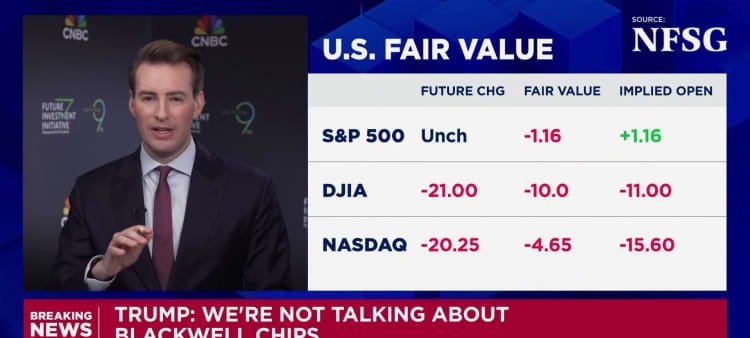Although the newly postponed controls are on hold for a year, Beijing’s separate restrictions introduced in early April remain intact. Trump described the temporary arrangement as a one-year deal that will be revisited annually. Analysts at Oxford Economics noted that China’s command over critical mineral refining is likely to continue providing periodic leverage in the bilateral relationship.
Additional steps were announced alongside the headline tariff and export-control adjustments. Both governments agreed to defer for twelve months matching fee increases on Chinese and U.S.-flagged vessels calling at each other’s ports. Beijing also committed to boost efforts to curb illicit fentanyl shipments and pledged to restart purchases of American soybeans and other agricultural commodities. Shortly after the news, soybean futures in Chicago slipped about 1.6%, while China’s CSI Rare Earths Industry Index gained more than 2%, according to LSEG data.
The U.S. administration paired the fentanyl tariff cut with a pause in the implementation of sanctions announced 29 September, which had placed several majority-owned subsidiaries of Chinese companies on the U.S. entity list. China’s commerce ministry said the two sides reached consensus on cooperation involving fentanyl controls, agricultural trade and outstanding technology issues, including discussions about the short-video app TikTok.
Semiconductors were another point on the Busan agenda. Trump told reporters that the leaders talked about “a lot of chips,” though not about Nvidia’s most advanced Blackwell architecture. He indicated that Beijing would engage with Nvidia and other suppliers regarding less-restricted products. The question of Taiwan, frequently central to high-level U.S.-China exchanges, was not raised during the session, the president said.

Imagem: Internet
The meeting, which lasted one hour and 40 minutes, produced what several business advisers characterized as unexpectedly broad results. Nonetheless, specialists at Asia Society Policy Institute pointed out that deeper structural issues—such as industrial overcapacity and China’s non-market practices—remain unresolved, leaving the truce potentially fragile.
In a statement carried by state broadcaster Xinhua, Xi advocated continued dialogue and regular working-level contact. Beijing and Washington said they would strengthen cooperation on trade, energy and broader economic matters, and expand cultural as well as people-to-people exchanges. Trump separately disclosed plans to visit China in April, with a reciprocal trip by Xi to the United States expected afterward, though no exact dates were released.
The cooperative tone in Busan contrasted with the more confrontational rhetoric that had dominated U.S.-China interactions earlier in the year, when both sides threatened additional trade and technology sanctions. In the days leading up to the summit, China resumed limited purchases of American soybeans, a gesture seen by market watchers as an indication that Beijing sought to create a constructive atmosphere.
Despite the current pause in escalatory measures, trade observers caution that the outlook could shift quickly. Key areas—among them export controls on advanced chips, rules governing rare earth shipments and broader industrial policy differences—remain unresolved and subject to annual negotiations under the framework announced by the two presidents.
Crédito da imagem: Andrew Harnik | Getty Images News


